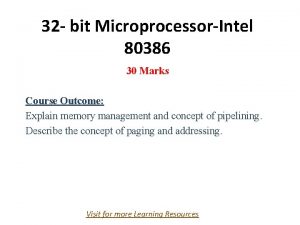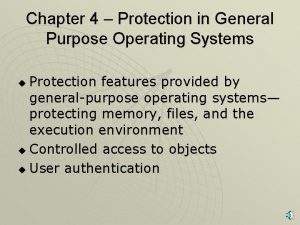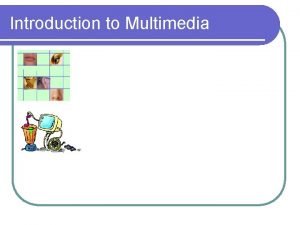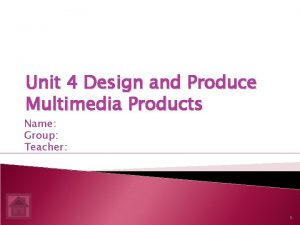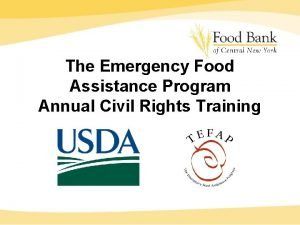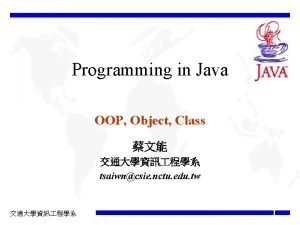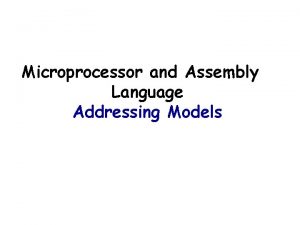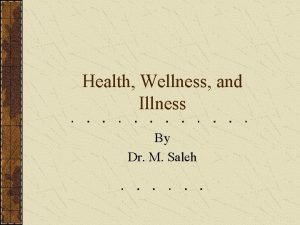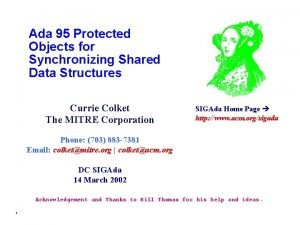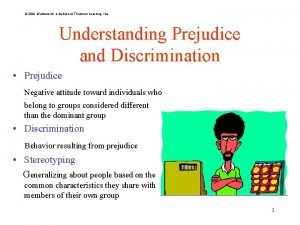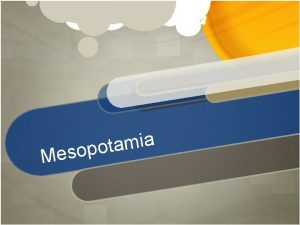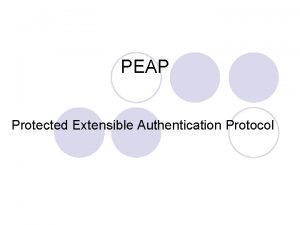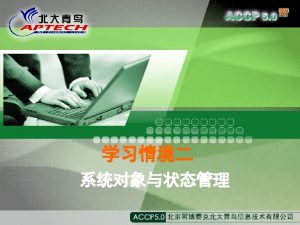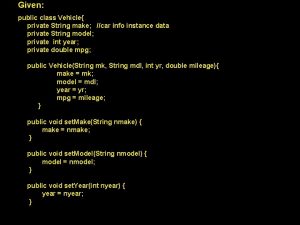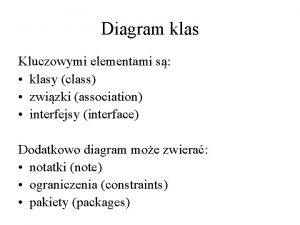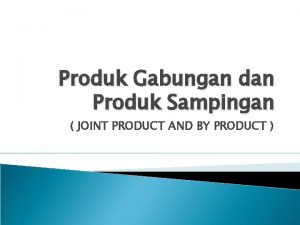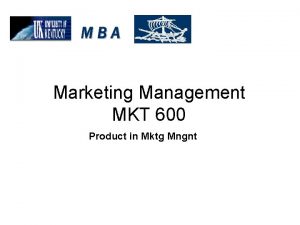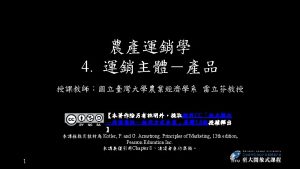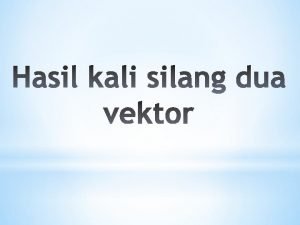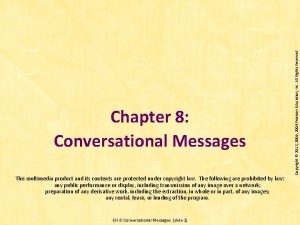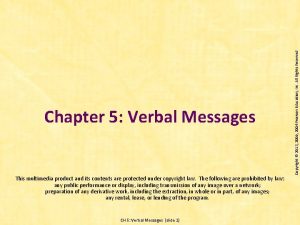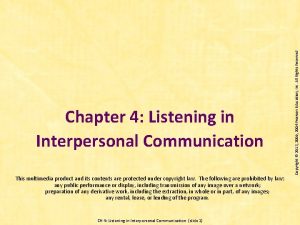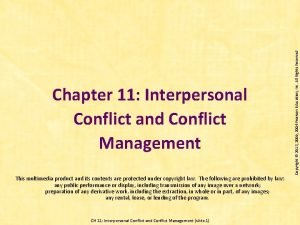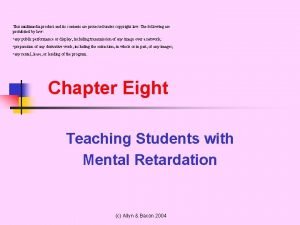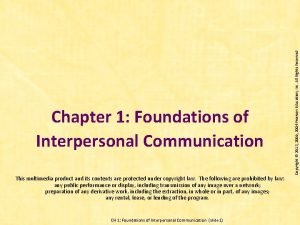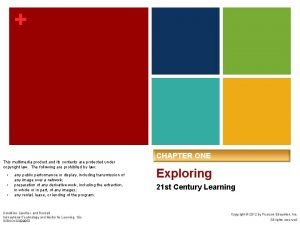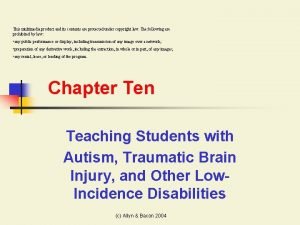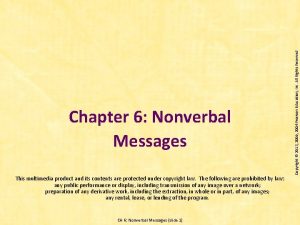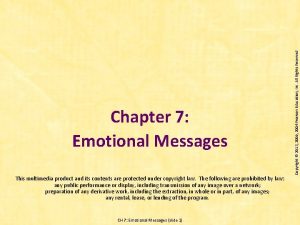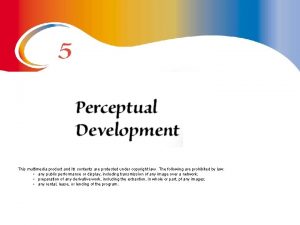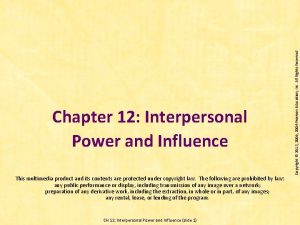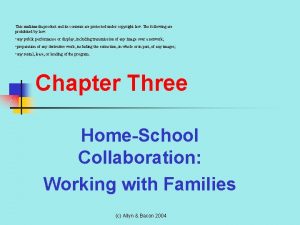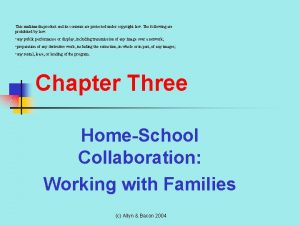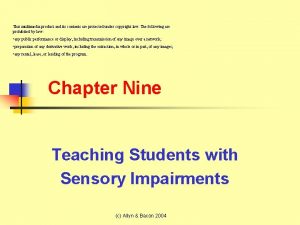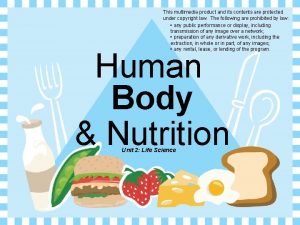This multimedia product and its contents are protected





























































- Slides: 61

This multimedia product and its contents are protected under copyright law. The following are prohibited by law: • any public performance or display, including transmission of any image over a network; • preparation of any derivative work, including the extraction, in whole or in part, of any images; • any rental, lease, or lending of the program. Chapter Ten Teaching Students with Autism, Traumatic Brain Injury, and Other Low. Incidence Disabilities (c) Allyn & Bacon 2004

Introduction n n In addition to sensory impairments, there are many other conditions that occur relatively rarely in children. These conditions include: Autism n n Traumatic Brain Injury Many Different Physical and Health Problems (c) Allyn & Bacon 2004

IDEA Definition Other Health Impairment is defined as “having limited strength, vitality, or alertness, due to chronic or acute problems such as a heart condition, tuberculosis, rheumatic fever, nephritis, asthma, sickle cell anemia, hemophilia, epilepsy, lead poisoning, leukemia, or diabetes that adversely affects a child’s educational performance. ” (c) Allyn & Bacon 2004

IDEA Definition Orthopedic impairment is defined as “a severe orthopedic impairment that adversely affects a child’s educational performance. ” (c) Allyn & Bacon 2004

Types of Orthopedic Impairments n Congenital Anomalies n n Impairments Caused by Disease n n Examples: clubfoot, absence of some member Examples: poliomyelitis, bone tuberculosis Impairments From Other Causes n Examples: cerebral palsy, amputations, fractures or burs (c) Allyn & Bacon 2004

Need for a Collaborative Approach v General education teachers should have the following personnel to assist them in meeting the needs of these students: v Behavioral specialists v Psychologists v Physical therapists v Occupational therapists v Nurses v Other health personnel (c) Allyn & Bacon 2004

Basic Concepts About Autism v Autism is a pervasive developmental disorder that primarily affects: v v v Social interactions Language Behavior Autism has a significant impact on individuals and their families. The characteristics of autism differ significantly among individuals with this disorder (i. e. , autism is a “spectrum disorder”). (c) Allyn & Bacon 2004

History of Autism v v v Autism has a confusing and controversial history. This condition was first described 50 years ago by Dr. Leo Kanner. Early controversy surrounded the erroneous belief that autism was caused by poor mother-child bonding. During the 1980 s, autism was found to be an organic disorder. Autism was deemed a separate disability category under the IDEA in 1990. (c) Allyn & Bacon 2004

IDEA Definition of Autism is “a developmental disability that primarily results in significant deficits in verbal and non-verbal communication and social interactions, generally evidenced before the age of 3 years and adversely affects the child’s educational performance. ” (c) Allyn & Bacon 2004

Some Facts About Autism Ø Ø Ø Autism typically appears within the first three years of life. Autism is the result of a neurological disorder that affects brain function. Autistic behaviors have been estimated to occur in as many as 1 in 500 individuals. Autism is four times more prevalent in boys than girls. There are no racial, ethic, or social differences among students who have autism. (c) Allyn & Bacon 2004

Common Difficulties Ø Students with autism typically have difficulties with: Ø Ø Ø Verbal and Non-Verbal Communication Social Interactions Leisure or Play Activities Repeated Body Movements Unusual Responses to People or Attachments to Objects Resistance in Changes in Routine (c) Allyn & Bacon 2004

Prevalence of Autism Ø Ø Ø Autism is a relatively rare condition although the number of children identified has increased dramatically over the past few years. The incidence of autism varies widely depending on the definition used. More restrictive definitions suggest that approximately 0. 7 to 2. 3 individuals per 10, 000 persons have autism. Less restrictive definitions indicate that autism may occur in as many as 7 to 14 per 10, 000 persons. Approximately 0. 10% of the school-age population was identified as having autism during the 1999(c) Allyn & Bacon 2004 2000 school year.

Causes of Autism There is no single cause of autism. Some causes are: ? Brain Damage ? Genetic Links ? Pregnancy Complications In most cases, a cause cannot be determined. Students who are at higher risk for autism include those: ? born with rubella ? who have fragile X syndrome (c) Allyn & Bacon 2004

Behavioral Deficits and Excesses Associated with Autism (Webber, 2002) n Behavioral Deficits n n n Behavioral Excesses Inability to relate to others Lack of functional language Sensory processing deficits Cognitive deficits (c) Allyn & Bacon 2004 n n Self-stimulation Resistance to change Bizarre and challenging behaviors Self-injurious behaviors

Positive Autism Characteristics Ø Some children with autism present some positive characteristics including: Ø Hyperplexia Ø Splinter Skills (c) Allyn & Bacon 2004

Classroom Adaptations for Students with Autism n n Intensive interventions have been somewhat effective for students with autism. No single method is effective with all children with autism. (c) Allyn & Bacon 2004

Inclusion of Students with Autism n n Growing evidence suggests that placing students with autism with their nondisabled peers in general education settings, with appropriate supports, can make a difference in their behaviors. Gains that may occur include: n n Increases intellectual and adaptive behavior Improved social skills (c) Allyn & Bacon 2004

Important Principles for Program Development n n n Use of Functional Activities Design of a Program Appropriate for the Student’s Developmental Level and Chronological Age Questions to be Considered: n n n Does the program teach skills that are immediately useful? Will the materials used be available in the student’s daily environment? Will learning certain skills make it less likely that someone will have to do the task for the student in the future? (c) Allyn & Bacon 2004

Self-Management Strategies ü Self-management is a promising intervention strategy for students with autism. This approach incorporates: ü ü ü Self-recording Self-reinforcement Self-management strategies can be used to address: ü ü ü Self-injurious behavior Delayed echolalic speech Stereotypical behavior (c) Allyn & Bacon 2004

Facilitated Communication Facilitated communication is a process in which a facilitator helps the person with autism type or use a keyboard for communication purposes. Recent research has cast doubt on its effectiveness. (c) Allyn & Bacon 2004

Asperger Syndrome ü ü ü This syndrome was first described in 1944 but was ignored for many years. Students with Asperger syndrome share many characteristics with those who have autism. Unique features of Asperger include: ü ü Higher cognitive development Better communication skills (c) Allyn & Bacon 2004

Teaching Students with Asperger Syndrome ü ü There is not single method to teach student with Asperger syndrome. Areas that should be considered include: ü ü ü Using visual strategies Using structural strategies Providing logical instructional strategies (c) Allyn & Bacon 2004

Basic Concepts About Traumatic Brain Injury (TBI) ü ü TBI was added as a separate disability category under IDEA in 1990. TBI is the most common cause of death and disability among children in the U. S. Each year, more than 1 million children suffer from, and 9% to 38% of these students are referred for special education services. This means that many children with TBI are not served(c) in special education Allyn & Bacon 2004

IDEA Definition of TBI Traumatic brain injury is an acquired injury to the brain caused by an external physical force, resulting in total or partial functional disability or psychosocial impairment, or both, that adversely affects educational performance. The term applies to open or closed head injuries resulting in impairments in one or more areas, such as cognition, language, memory, attention, reasoning, abstract thinking, judgment, problem solving, perceptual and motor abilities, psychosocial behavior, physical functions, information processing, and speech. The term does not apply to brain injuries that are congenital, degenerative, or induced by birth trauma. (c) Allyn & Bacon 2004

Causes of TBI ü ü ü ü Falls Vehicle Accidents Abuse Lack of Oxygen to the Brain Infections Tumors Strokes (c) Allyn & Bacon 2004

Persisting Deficits Associated with TBI ü Social-emotional and cognitive deficits caused by TBI may persist long after physical capabilities recover. These include: ü ü Inability to Concentrate Poor Short-Term Memory Poor Self-Confidence/Self-Esteem Personality Changes (c) Allyn & Bacon 2004

Prognosis for Students with TBI ü The prognosis for recovery is very variable and depends on many factors such as: ü ü Type of injury Rapidity and quality of medical and surgical care Rehabilitation Educational intervention (c) Allyn & Bacon 2004

Classroom Adaptations for Students with TBI Ø Ø Ø The transition of students with TBI from rehabilitation facilities to school settings needs to be coordinated among a number of professionals. Teachers may need to address the significant amount of schooling the student has missed. An appropriate program includes evaluating the impact of the injury on functioning and potential learning. (c) Allyn & Bacon 2004

Effective Instructional Strategies for Students with TBI n n n Retaining Impaired Cognitive Processes Developing New Skills or Procedures to Compensating for Residual Deficits Creating an Environment that Permits Effective Performance Identifying Effective Instructional Procedures Improving Metacognitive Awareness (c) Allyn & Bacon 2004

Types of Health Problems and Physical Disabilities n n n Asthma Childhood Cancer Cystic Fibrosis Deaf-Blind Diabetes (Juvenile Diabetes) (c) Allyn & Bacon 2004 n n HIV and AIDS Muscular Dystrophy Spina Bifida Tourette Syndrome

Asthma q q Asthma is the most common chronic childhood illness in children, affecting about 3 million children under the age of 15. Asthma is characterized by episodes of coughing, shortness of breath, and wheezing, resulting from the narrowing of small air passages, . Asthma is caused by irritation of the bronchial tubes due to allergic reactions to various substances. Asthma attacks can be very dangerous and should be taken seriously by school personnel. (c) Allyn & Bacon 2004

Suggestions for Teachers Know the signs and symptoms of respiratory distress. Work on building the student’s selfimage. Ensure that students have proper medications and take them at appropriate times. Allow the student to participate in nonstressful activity until an episode subsides. Allow students to rest when needed, as they often tire easily. Introduce a vaporizer or humidifier to the classroom when needed. Eliminate any known allergens found in the classroom. Work on building up the student’s self-image. Determine what types of physical limitations might have to be set. Sensitize other students in the class to the nature of allergic reactions. Recognize the side effects of prescribed medications. Develop an effective system for addressing makeup work issues. (c) Allyn & Bacon 2004

Important Questions School Personnel Need to Ask q q q q Is the school free of tobacco all of the time, including during school-sponsored events? Does the school maintain good indoor air quality? Is a school nurse in the school all day, every day? Can students take medicines at school as recommended by the doctors and parents? Does the school have an emergency plan for taking care of a child with a severe asthma attack? Does someone teach school staff about asthma, asthma management plans, and asthma medications? Do students with asthma have good options for fully and safely participating in physical education class and recess? (c) Allyn & Bacon 2004

Basic Concepts About Childhood Cancer Ø Ø Childhood cancer occurs in approximately 1 in 330 children prior to the age of 19. Types of childhood cancer include: Ø Ø Ø Leukemia Lymphoma Tumors of the Central Nervous System Bone Tumors Affecting the Eyes Tumors Affecting Various Organs (c) Allyn & Bacon 2004

Suggestions for Meeting the Needs of Children with Cancer n n n Express your concern about a student’s condition to parents and family. Learn about a student’s illness from parents and hospital personnel. Inquire about the type of treatment and anticipated side effects. n n n (c) Allyn & Bacon 2004 Refer the student for any needed special education services. Prepare for a student’s terminal illness and possible death. Encourage discussion and consideration of future events.

Suggestions for Meeting the Needs of Children with Cancer n n n Allow for exceptions to classroom rules and procedures when indicated. Be available to talk with a student when the need arises. Share information about the student’s condition and status with teachers and student’s siblings. n n n (c) Allyn & Bacon 2004 Be prepared to deal with issues concerning death and dying with students. Provide information to school staff and parents, as needed. Facilitate the student’s reentry into school after an extended absence.

Basic Concepts About Cerebral Palsy (CP) § § § CP is a disorder of movement that is caused by brain damage. CP affects the voluntary muscles and often leads to major problems in communication and mobility. CP is neither progressive nor communicable. Education, therapy, and applied technology can help persons with CP lead productive lives. Between 6 and 10 individuals for every 10, 000 persons have CP. (c) Allyn & Bacon 2004

Methods for Classifying CP ü By Type ü ü By Distribution ü ü Physiological Topological By Degree of Severity (c) Allyn & Bacon 2004

Intervention Approach for CP ü ü Primary focus is on meeting physical needs. Intervention may include: ü ü ü Physical Therapy Occupational Therapy Surgery (c) Allyn & Bacon 2004

Suggestions Create a supportive classroom environment that encourages participation. Provide many real-life Consider the use of activities. augmentative communication devices. Allow extra time for students to move from one location to another. Learn the correct way to position and handle the student and how to use adaptive equipment. Encourage students to use computers that are equipped with expanded keyboards or other portable writing aids. Ask students to repeat verbalizations that may be hard to understand. Understand the functions and components of a wheelchair. Consult physical and occupational therapists. (c) Allyn & Bacon 2004

Basic Concepts About Cystic Fibrosis § § Cystic fibrosis is an inherited, fatal disease that results in an abnormal amount of mucus throughout the body, most often affecting the lungs and digestive tract. Cystic fibrosis occurs in approximately 1 in every 2, 000 live births. Most children with cystic fibrosis live to their mid-teens. As the diseases progresses, it greatly affects stamina and the student’s physical conditions. (c) Allyn & Bacon 2004

Suggestions Prepare students in class for the realities of this disease (e. g. , coughing, noncontagious sputum, gas) Know the medications a student must take and be able to administer them. Support the implementation of special diets, if needed. Learn how to clear a student’s lungs and air passages, as such assistance may be needed after certain activities. Ensure that the student is included in all class activities to whatever extent is possible. Provide opportunities for students to talk about their concerns, fears, and feelings. Consider restricting certain physical activities. Prepare students for the eventual outcomes of the disease by raising the topic of death and dying. (c) Allyn & Bacon 2004

Basic Concepts About Students Who Are Deaf-Blind § § § Students who have both visual and hearing impairments present unique challenges for educators. Students who are both deaf and blind have needs that are extremely complex. “Dual sensory impairment” or “multiple sensory impairments” are considered more appropriate terms than “deaf-blind” even though this term is still used in the IDEA. (c) Allyn & Bacon 2004

Basic Concepts About Students Who Are Deaf-Blind § § § Students who are classified as being deafblind may have degrees of visual and auditory impairments that do not classify as blindness or deafness. Estimates are that 94% of these students have residual hearing or sight. During the 1999 -2000 school year, only 1, 845 students, nationwide, were identified as deafblind and were served in special education programs. (c) Allyn & Bacon 2004

Suggestions n n Use an ecological approach to assessment and skill selection to emphasize functional needs of students. Use time delay prompting, where time between prompts is increased. n n Use a variety of prompts, cues, and reinforcement strategies in a systematic instructional pattern. Use groups and cooperative learning strategies. (c) Allyn & Bacon 2004

Basic Concepts About Diabetes (Juvenile Diabetes) n n n Diabetes affects about 8 million people in the U. S. Diabetes is a metabolic disorder in which the pancreas cannot produce sufficient insulin to process food. Teachers should be alert to possible symptoms of diabetes including: n n n Increased thirst, appetite, and urination Weight loss Irritability (c) Allyn & Bacon 2004

Basic Concepts About Diabetes (Juvenile Diabetes) n n Children with Type I (insulin-dependent) diabetes must take daily injections of insulin. School personnel must have knowledge about the special dietary needs of children and understand their need for a daily activity regimen. (c) Allyn & Bacon 2004

Suggestions n n n Communicate regularly with the family to determine any special needs the student may have. Schedule snacks and lunch at the same time every day. Help the student deal with the disease. n n (c) Allyn & Bacon 2004 Be prepared for hypoglycemia – a situation in which the student needs sugar. Understand the distinction between having too much insulin in the body and not having enough.

Basic Concepts About Epilepsy v v Epilepsy is a series of recurrent convulsions, or seizures, that are caused by abnormal electrical discharges in the brain. There are several different types of epilepsy, determined by the impact of abnormal electrical activity. Approximately 1% of the population of the U. S. has epilepsy. No common characteristics are shared by people with epilepsy. (c) Allyn & Bacon 2004

Signs of Epilepsy v v v v Staring Spells Tic-Like Movements Rhythmic Movements of the Head Purposeless Sounds and Body Movements Head Drooping Lack of Response Eyes Rolling Upward Chewing and Swallowing Movements (c) Allyn & Bacon 2004

Medication and Epilepsy v v Medication is the primary intervention for students with epilepsy. Even persons who respond very well to medications have occasional seizures. Teachers and school personnel need to know the steps to be taken in the event of a seizure. Teachers, parents, and others should record behaviors before, during and after the seizure. (c) Allyn & Bacon 2004

Basic Concepts About HIV and AIDS v v v Human immunodeficiency virus (HIV) infection occurs when the virus attacks the body’s immune system, leaving an individual vulnerable to infections or cancers. In its later stages, HIV becomes acquired immunodeficiency syndrome (AIDS). HIV/AIDS is transmitted only through the exchange of blood or semen. Two of the fastest-growing groups contracting HIV are infants and teenagers. In 1996, there were 7, 472 cases of AIDS in children under the age of 13. Teachers need to take precautions when dealing with HIV/AIDS. (c) Allyn & Bacon 2004

Guidelines n n Follow the guidelines (universal precautions) developed by the Centers for Disease Control and the Food and Drug Administration for working with individuals affected with HIV/AIDS. Ask the student’s physician whethere any special procedures that must be followed. n n (c) Allyn & Bacon 2004 Discuss HIV/AIDS with the entire class, providing accurate information, dispelling myths, and answering questions. Discuss with students in the class that a student’s skills and abilities will change over time if he or she is infected with HIV/AIDS.

Guidelines n n Prepare for the fact that the student may die, especially if AIDS is present. n Be sensitive to the stress that the student’s family is undergoing. (c) Allyn & Bacon 2004 Ensure that the student with HIV/AIDS is included in all aspects of classroom activities.

Basic Concepts About Muscular Dystrophy ü ü Muscular dystrophy is an umbrella term used to describe several different types of inherited disorders that result in progressive muscular weakness. Duchenne Dystrophy: ü ü ü The most common and serious form of muscular dystrophy In this type of muscular dystrophy, fat cells and connective tissue replace muscle tissue. This form of muscular dystrophy results in an inability to walk, typically by age 12. Individuals with this type of dystrophy typically die during young adulthood. Teachers must adapt their classrooms to accommodate the physical needs of these students. (c) Allyn & Bacon 2004

Suggestions Be prepared to help the student deal with the loss of various functions. Monitor the administration of required medications. Involve the student in as many classroom activities as possible. Monitor the amount of time the student is allowed to stand during the day. Use assistive techniques that do not hurt the individual. Be familiar with different types of braces. Understand the functions and Prepare other students in components of wheelchairs. class for the realities of the disease. (c) Allyn & Bacon 2004

Basic Concepts About Spina Bifida ü ü ü Spina bifida is a congenital condition characterized by a malformation of the vertebrae and spinal cord. Spina bifida occurs in about 1 in every 2, 000 births. School personnel must ensure appropriate use of wheelchairs and make accommodations for limited use of arms and hands. (c) Allyn & Bacon 2004

Three Types of Spina Bifida ü Spina Bifida Occulta ü ü Meningocele ü ü ü Least serious form Occurs when vertebral column fails to close properly leaving a hole in the bony vertebrae Surgical closure is undertaken Similar to spina bifida occulta except that it includes outpouching without nervous tissue Surgical correction is undertaken Myelomeningocele ü ü ü Most common and serious form Similar to meningocele except that outpouching includes nervous tissue Generally results in permanent paralysis (c) Allyn & Bacon 2004

Suggestions Learn about any medical needs the student may have. Learn about the various type of adaptive equipment the student may use. Maintain a safe physical environment that minimizes the risk of accidents. Understand how to use and maintain a wheelchair. Learn proper positioning and handling techniques. Understand the process of clean intermittent catheterization. Be ready to deal with occasional incontinence of students. Ensure the full participation of students in all classroom activities. Help the student develop a positive, healthy self-concept. Notify parents if there any unusual physical or behavioral changes. (c) Allyn & Bacon 2004

Basic Concepts About Tourette Syndrome n n n Tourette syndrome is a neuropsychiatric disorder that occurs in males three times as often as in females. The prevalence rate for males is as high as 1 in 1, 000. This syndrome is characterized by multiple motor and or more vocal tics. These tics may occur many times a day, nearly every day, or intermittently. (c) Allyn & Bacon 2004

Basic Concepts About Tourette Syndrome n Characteristics of Tourette syndrome include: n Motor tics n Inappropriate laughing n Rapid eye movements n Winks and grimaces n Aggressive behaviors n In some cases: n n n Mental retardation Mild to moderate incoordination Peculiar verbalizations (c) Allyn & Bacon 2004
 Antigentest åre
Antigentest åre Multimedia def
Multimedia def Multimedia becomes interactive multimedia when
Multimedia becomes interactive multimedia when Csc253
Csc253 Esa multimedia.esa.int./multimedia/virtual-tour-iss
Esa multimedia.esa.int./multimedia/virtual-tour-iss Difference between real protected and virtual mode of 80386
Difference between real protected and virtual mode of 80386 The kidneys are protected by the ribs and a cushion of fat
The kidneys are protected by the ribs and a cushion of fat Protected objects and methods of protection
Protected objects and methods of protection The emigree annotations
The emigree annotations Its halloween its halloween the moon is full and bright
Its halloween its halloween the moon is full and bright Multimedia products examples
Multimedia products examples Multimedia product
Multimedia product R087 client brief
R087 client brief What is a multimedia product
What is a multimedia product Product life cycle kotler
Product life cycle kotler Marginal product and average product
Marginal product and average product Product line and mix
Product line and mix Product/service desirability examples
Product/service desirability examples Gdp 519
Gdp 519 Federally protected classes
Federally protected classes C++ class implementation
C++ class implementation Walmart pto accrual rates
Walmart pto accrual rates Protected mode memory addressing
Protected mode memory addressing Scope of protected cultivation
Scope of protected cultivation High level wellness in a favorable environment
High level wellness in a favorable environment Federally protected classes
Federally protected classes Federally protected classes
Federally protected classes Ada protected object
Ada protected object Federally protected classes
Federally protected classes Protected weight bearing
Protected weight bearing Which landforms protected the cities from invasion?
Which landforms protected the cities from invasion? West coast national park marine protected area
West coast national park marine protected area Peap a
Peap a Treasury inflation protected securities cfa
Treasury inflation protected securities cfa Is hair colour a protected characteristic
Is hair colour a protected characteristic Host protected area
Host protected area Was rome protected by the alps
Was rome protected by the alps Protected void
Protected void Cosmic superclass
Cosmic superclass Protected class
Protected class Dmca protected co to znaczy
Dmca protected co to znaczy When a train increases its velocity, its momentum
When a train increases its velocity, its momentum Sunny windy rainy cloudy
Sunny windy rainy cloudy If its a square it's a sonnet summary
If its a square it's a sonnet summary Its not easy but its worth it
Its not easy but its worth it Whats a prime factor
Whats a prime factor 56 as a product of prime factors
56 as a product of prime factors Content of a dead man's pocket
Content of a dead man's pocket Middle mediastinum: contents mnemonic
Middle mediastinum: contents mnemonic Outlining and organizing the speech contents
Outlining and organizing the speech contents Contents of the dead man's pocket questions and answers
Contents of the dead man's pocket questions and answers Pengertian produk bersama
Pengertian produk bersama Mkt 600
Mkt 600 Cross product vs dot product
Cross product vs dot product What is product line depth
What is product line depth Sifat cross product
Sifat cross product Core product augmented product
Core product augmented product Dogld
Dogld Rumus perkalian silang
Rumus perkalian silang Career portfolio definition
Career portfolio definition Deep perineal pouch contents
Deep perineal pouch contents Trali symptoms
Trali symptoms





